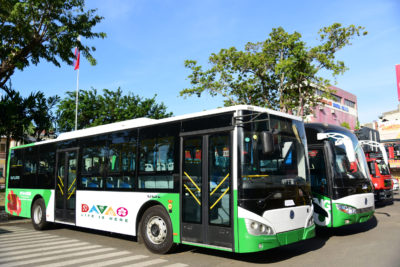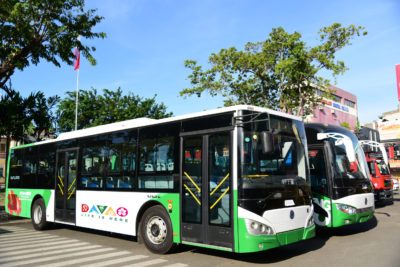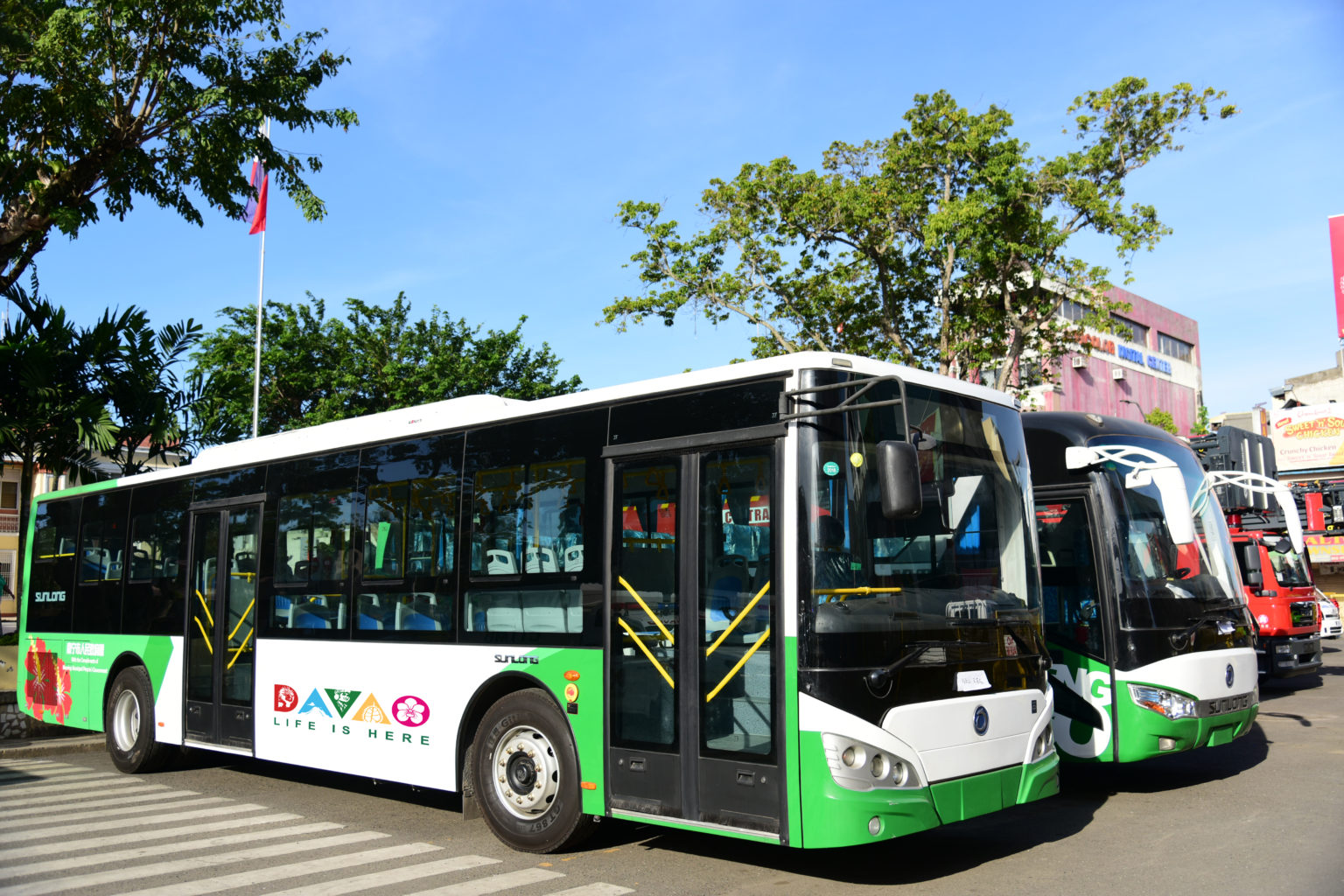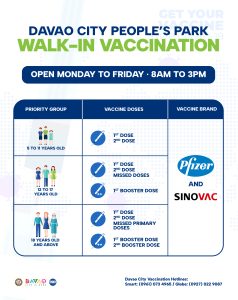Implementers of the High Priority Bus System (HPBS) team believed that the transport modernization project in Davao City will help address the commuters’ safety concerns and further improve the promotion of culture of security for a better public transport experience.
Speaking during the Sakay Ta Bai program aired on the Davao City Disaster Radio, Department of Transportation (DOTR) Project Development Officer III Chrismae Babia shared that ensuring the safety and security of the passengers has been their topmost priority in the implementation of the program.
She said that one of the benefits of the HPBS program is that passengers will feel safer because of the security features integrated into the bus fleets and bus stops.
“Naa tay mga features nga gi-integrate sa system nato like naay CCTV cameras. Makita nato ang movement sa mga pasahero within the bus makatabang ni siya in cases nga naay dili maayong mahitabo (We have security features integrated into the system like CCTV cameras. It will monitor the movement of the passengers in case of unfortunate events),” Babia said.
She added, “Hopefully, by incorporating these security measures, ma-discourage nato ang offensive or dili mayo nga behaviors (Hopefully, by incorporating these security measures, we will discourage offensive behaviors).”
During the planning stage, they also took into consideration the concerns of the vulnerable sector, especially the persons with disabilities (PWDs) and women who are susceptible to harassment in public transport. That is why they ensured the integration of the Gender and Development Program (GAD) in implementing its programs.
“Diba naa man tay gina-cultivate diri sa Davao nga culture of security, hopefully kining safety and security features, makatabang sa atong security cluster sa reporting and monitoring kay ang pag commute is an everyday experience (In Davao City, we have this culture of security. Hopefully, the safety and security features of our bus system will help the security cluster when it comes to reporting and monitoring because commuting is an everyday experience)” she said.
While there are some people, especially those who are directly affected by the transition from jeepneys to buses, who continue to resist the change, she emphasized the long-term benefits of the program for the city’s development and the welfare of Dabawenyos.
“With the implementation, we envision that Dabawenyos to have a productive, more comfortable, convenient, safe, secured, and of course sustainable life,” she said.
For the productivity, Babia underscored that since the passenger will have the capacity to track the location of the buses and estimate the time of their arrival, they can now plan without worrying about the possible traffic along the way.
“We are expecting that the travel time will be reduced as compared sa atong na experience sa una nga dugay ang travel time (to what we have experienced before wherein the travel time is longer),” she said.
Also, during the implementation of the Interim Bus System and Peak Hours Augmentation Bus System (PHABS), they received positive responses from Dabawenyos who experienced the comfort of riding buses as compared to jeepneys.
With this project, they hope to encourage owners of private vehicles to take public transport when going around the city to help reduce the number of vehicles running on the road to help mitigate traffic jams and help the environment.CIO








